2016 Intense M16 C Pro Bike
(discontinued)
| Where To Buy | |||
|---|---|---|---|
Free shipping on orders over $50 (continental U.S. only).
International shipping available. Some exclusions apply. |
|||
Free shipping on orders over $50 (continental U.S. only).
International shipping available. Some exclusions apply. |
|||
Review by Fred Robinson // Photos by @luca_cometti_photo
We've all heard that the M16C is here. There hasn't been much talk of how Intense's first production carbon downhill bike actually rides beyond a couple quick articles that barely scratch the surface, like our First Look earlier this month. Well, for the past two months we've been putting the M16C though the paces and feel it's finally time to weigh in on our thoughts about the new bike. While the new carbon M16, which we'll simply refer to as the M16C from now on, shares features like adjustable travel (8.5 to 9.5 inches) and leverage-curve, as well as nearly identical geometry and spec, is the new M16C leaps and bounds ahead of the alloy M16 (M16A), or is it simply a refinement of an already-proven platform? Read on to find out.

Intense M16C Frame Features
- World Cup-tested geometry
- EPS-molded high modulus carbon frame
- Compression-molded carbon fiber upper link
- Full internal cable routing for brake and shifting cables
- Forged lower link
- Double sealed pivots for long bearing life
- Dual grease ports on lower link for easy maintenance
- Full carbon dropouts and disk mounts
- Angular contact bearings maximize stiffness
- Collet axle pivots lock in place without pinch bolts
- 157x12mm spacing
- 215-240mm of adjustable travel
- 5 year frame warranty
- Titanium hardware
- Frame Weight: 6.61lbs w/o shock
- Available in S, M, L & XL
- MSRP - $3,699 for frame and shock
Intense M16C Geometry

Initial Impressions
Jeff Steber, Intense Cycles' founder and lead designer, isn't shy about stating that Intense puts a lot of thought and effort into not only the performance of their bikes, but also the aesthetics. And, with the move to a full-carbon front and rear triangle for the M16, it seems Steber was able to completely bring his vision of exactly what a good looking downhill bike should be to the table. The M16C is a sleeker, slimmer and more refined looking downhill bike than its alloy brother, with better flowing lines, curves and shapes. Another improvement over the M16A, at least aesthetically, is the carbon bike sees completely internal cable routing to further its clean look.
There's also a notable difference in weight when comparing the alloy and carbon M16's, with the carbon bike weighing at only 35.5lbs (16.10kg). That's an almost three-pound reduction over the similarly spec'd M16A we tested earlier this year, which is significant. To note, we tested and confirmed the weight of a large M16C with a 550lbs steel spring, tubes and no pedals. Intense claims the weight of the frame, without shock, is 6.61lbs.

Intense did a great job covering the details with lots of integrated features on the M16C. The frame features integrated fork bumpers, which double as cable guides, and molded rubber frame protection for the lower portion of the down tube and drive-side chainstay to help prevent damage from rock strikes and chain rub. The M16C also comes equipped with an integrated plastic rear fender that helps shield the rear shock from mud and debris.
After setting up the cockpit to our liking and getting our initial sag and shock setting to pass the parking lot test, it was time to put the M16C back in its natural habitat to see how it preformed.

On The Trail
As mentioned, we've been on the M16C since mid-September, the tail-end of lift season for us. We started our test at the Mammoth Mountain Bike Park and have since ridden the bike primarily on our local tracks, which range from fast, wide-open trails to steep, rocky and tech. At the bike park, while we were still getting acquainted with the M16C, one of the first things we noticed was that the bike's a bit more playful than we had initially expected. Despite what notions you may have of an eight-and-a-half-inch VPP-style bike, we found ourselves hopping over sections and playing with line choice as opposed to just plowing straight through, not that this bike is incapable of that. This was a bit puzzling at first, as we were riding the bike a bit deeper into its travel than where we'd normally setup a bike. But, at 35% sag the bike still felt plenty active and responsive. Since we were at a bit more sag than typical, we tried bumping the spring up 50-pounds to get us around 30%, but after a few days on that setup, we put the softer spring back on, much preferring how the bike rode while sitting deeper in its travel.

After we had the suspension dialed (more on that later), the bike felt lively and rewarded us with additional speed while pumping inclines and backsides. In hard cornering situations, we felt like we could really drive the bike into the berm without loosing stability, rewarding us with additional speed. Since we had the M16C setup so far into its travel, small bump tracking and traction in the chatter was excellent, even while grabbing too much rear brake. Since we brought up cornering, the M16C does have a higher than average bottom bracket, at 14.375 inches. But, due to the fact this bike sits deeper into its travel than most, we didn't find the high bottom bracket to be a disadvantage in corners or with overall stability; the bike still railed corners like the best of them.
As stated previously, Intense went completely internal with the cable routing on the M16C, which some will love and some will hate. While it does clean up the appearance of the bike nicely, some will argue that the price of having to pull and re-bleed your brake just isn't worth it. Whatever your take is, there's another side effect of internal housing that no rider would be stoked on, and that's additional noise caused by the housing rattling inside the frame's tubing. Fortunately, Intense thought of this and molded the front triangle with housing guides//tubes that run inside the down tube, not only making installation a breeze but preventing any undesired cable noise. All-in-all, the M16C runs exceptionally quiet.
So where did we find the M16C really shine? Anywhere fast, steep and rough. At Mammoth, we were really stoked with the M16C, as the trails there are raw, really rough and if you know where to look, plenty steep. But when we got the bike back home and took it to our local hill, a hill you can honestly ride a 160mm bike down just fine, it kinda felt like the wind was taken out of our sails. It wasn't until we got the bike back on a proper DH track (a track where if you showed up with your "aggressive mini-downhill" trail bike, you'd surely be out-gunned) did the M16C really come to life again. With a static 63.5-degree head angle and 49-inch wheelbase (large frame), the bike likes to be pointed down and ridden fast. And once you're pointed down, the bike rewards you with a stable feeling at high speeds, and an off-the-back, aggressive stance once things get really steep.

Intense M16C Pro Build Kit
- Frame: M16 SL 275 Monocoque UD Carbon Frame
- Fork: RockShox BoXXer World Cup, 200 mm
- Shock: RockShox Vivid R2C Coil
- Shifters: SRAM X01 DH 7-speed
- Derailleur: SRAM X01 DH 7-speed
- Cranks: SRAM X01 36t
- Cassette: SRAM XG-795 10-24
- Chain: SRAM X1
- Chain Guide: E13 LG1
- Bottom Bracket: BSA (threaded) 83 mm
- Wheels: Stan's No Tubes Rapid 30
- Tires: Maxxis Minion 2.75x2.5"
- Saddle: WTB Volt Team
- Seatpost: Thomson Elite 31.6 mm
- Handlebar: Renthal Fatbar
- Stem: Renthal Integra II DM 45 mm
- Headset: Cane Creek 40
- Brakeset: Shimano Saint 203 mm f/r
- Grips: Intense Dual Density Lock-On
- MSRP: $8,499

Despite the mix of both SRAM and Shimano controls, everything found its place nicely on the Renthal Fatbars. Overall, Intense did an excellent job of picking quality components for the M16C. When you see an OEM spec'd bike with mix of brands like Thomson, Maxxis, Renthal, SRAM, RockShox and Shimano, it's clear the manufacturer based the spec on performance and not what their OEM-spec manager could get the best pricing on. We feel the M16C Pro Build reflects that nicely.
The wheels, which are Stan's No Tubes Rapid 30's, may not be the highest-end wheelset out there, but they have proven reliable and reasonably stiff so far. We've tested quite a few bikes that come equipped with SRAM's X01DH 7-speed drivetrain and the downhill-specific transmission continues to impress up with its performance. As far as braking performance, Intense initially equipped our bike with a 203mm front rotor and 180mm rear, which we promptly swapped out for 203mm all around. A bit perplexed as to why a downhill bike would come with a 180mm rear rotor, we double-checked Intense's site and it looks like either they listened to our input, gave us an out-of-spec bike or wised up on their own and now supply the M16C with 8-inch rotors front and rear. Once rotors were sorted, the Shimano Saint brakes have delivered gobs of power that's easy to control, and we've experienced zero fade throughout the duration of our test. All things considered, Intense has yet again brought us a well-spec'd downhill machine.

In regard to the suspension and to expand on how we set it up, the bike comes equipped with a RockShox BoXXer World Cup and Vivid R2C coil shock. Setting up the air-sprung BoXXer was par for the course - sag was set to 25% and we added two additional Bottomless Tokens (for a total of three). 25% is a tad more than our tester's typical sweet-spot, but in the case of the M16C, it balanced the bike out nicely. As we mentioned in our First Look, the one major change in spec between the M16A and M16C is the use of a Vivid R2C in place of the Cane Creek Double Barrel found on the M16A. Why Intense made this switch, we're not sure, but we did feel the Vivid played better with the suspension design.
Things That Could Be Improved
One thing we noticed before we even got the bike dirty, was the M16C's limited turning radius, which was an issue we found on the M16A as well. While it has been improved with the carbon bike and we don't see the need to completely remove the integrated fork bumpers in-favor of standard, fork-mounted bumpers, it's worth noting that you will hit steering lock a few degrees before most other bikes we've tested. Unlike they M16A, we never experienced steering lock while actually riding. The only other small thing we could nit-pick is while Intense did a great job including lots of integrated frame protection, we feel like they've missed an easy opportunity to include a shuttle-guard of sorts on the upper portion of the down tube. Beyond that, we've found the M16C to be a well-thought-out downhill bike.
Long Term Durability
After two months of mostly local riding and some park days sprinkled in, the M16C has held up great. In the past, Intense had some issues with hardware staying put, but we're happy to report that this hasn't been the case with the M16 (both carbon and alloy). Despite riding the bike in some wet and muddy conditions, the rear suspension's action and bearings have stayed smooth and consistent and when they do require attention, Intense has fitted the bike with Zerk grease ports for easy maintenance. All components, including the Stan's Rapid 30 wheels, have remained problem-free.

What's The Bottom Line?
Why did we give the same 4-star rating for the M16C that we did for the M16A? Clearly the M16C is a step-up in performance with its carbon construction, lighter weight and slightly improved spec? It really just came down to the value to performance ratio, and quite honestly we feel like both bikes have their own advantages. If you're a more value-oriented rider who still appreciates a handmade-in-the-USA frame, isn't concerned with exotic materials or a slight weight penalty on the scale, the M16A offers many of the advantages the carbon version totes with a slightly lower price tag. If you're a rider who demands the absolute most out of their bike, not only in terms of flat-out performance but with looks and materials too, then the M16C is a bike you should definitely put on your short list as one to consider. Comparisons aside, Intense has continued to carry on their legacy of making the M-Series a top contender when it comes to a full-blown downhill race bike, one that loves going fast and tackling the nastiest of terrain.
For more info, visit intensecycles.com.
About The Reviewer
Fred Robinson, a.k.a. "Derf E. Lee," has been on two wheels since he was two years old. He picked up a mountain bike in 2004 and started racing downhill in 2006. He has seen moderate success racing but focuses his efforts on building, maintaining and riding his local trails. He's deceptively quick for a bigger guy and likes steep, fast trails where he can hang it off the back of the bike. As a SoCal native he mostly rides trails covered with loose, traction-less turns and sharp, immovable rocks. Besides downhill, he's an avid air-guitar player and Civil War reenactor.

"The next generation of M" is the official slogan for the new Intense Carbon M16, or M16C. It's clear the latest iteration of one of the most iconic lines of Downhill bikes has stayed true to the previous generations of M-Series bikes in terms of both performance and looks. While Intense has been producing carbon bikes for some time now, this is the first time we've seen a carbon Downhill bike from the SoCal manufacturer. Cutting a dramatic amount of weight when compared to the M16A, which was just released earlier this year, the new carbon sled features the same geometry and adjustability as its the M16A model, but sees a few updates with fully internal cable routing, a RockShox Vivid R2C Coil and a frame weight of only 6.61 pounds (without shock). We got to spend a few days aboard the new steed during the Mammoth Mountain Kamikaze Games in order to weigh-in with our initial thoughts on the bike. Full details and our early impressions regarding Intense's newest Downhill weapon, below.
Intense M16C Features
- World Cup tested geometry
- EPS molded high modulus carbon frame
- Compression molded carbon fiber upper link
- Full internal cable routing for brake and shifting cables
- Forged lower link
- Double sealed pivots for long bearing life
- Dual grease ports on lower link for easy maintenance
- Full carbon dropouts and disk mounts
- Angular contact bearings maximize stiffness
- Collet axle pivots lock in place without pinch bolts
- 157x12-mm spacing
- 215-240-mm of adjustable travel
- 5 year frame warranty
- Titanium hardware
- Frame Weight: 6.61-lbs w/o shock
- Available in S, M, L & XL
- MSRP - $3,699 for frame and shock
Intense M16C Geometry

Intense M16C Pro Build Kit
- Frame: M16 SL 275 Monocoque UD Carbon Frame
- Fork: RockShox Boxxer World Cup, 200 mm
- Shock: RockShox Vivid R2C Coil
- Shifters: SRAM X01 DH 7-speed
- Derailleur: SRAM X01 DH 7-speed
- Cranks: SRAM X01 36t
- Cassette: SRAM XG-795 10-24
- Chain: SRAM X1
- Chain Guide: E13 LG1
- Bottom Bracket: BSA (threaded) 83 mm
- Wheels: Stan's No Tubes Rapid 30
- Tires: Maxxis Minion 2.75x2.5"
- Saddle: WTB Volt Team
- Seatpost: Thomson Elite 31.6 mm
- Handlebar: Renthal Fatbar
- Stem: Renthal Integra II DM 45 mm
- Headset: Cane Creek 40
- Brakeset: Shimano Saint 203 mm f/r
- Grips: Intense Dual Density Lock-On
- MSRP: $8,499

Initial Impressions
Having previously tested Intense's M16A with an almost identical build kit, we know Intense has put together a solid mix of parts. One major change Intense made with the M16C, though, is the addition of a RockShox Vivid R2C Coil in place of the Cane Creek Double Barrel, which is spec'd on the alloy bike. We're always a bit concerned when we see a mix of Shimano and SRAM controls on the bars of a new bike, due to fitment and compatibility issues when it comes to positioning them in an area with limited real-estate. Luckily, in this case, the controls are minimal with just two brake levers and a shifter and we were able to get everything just where we like it.
Something we noticed right off the bat was the turning radius of the M16C, which is a bit limited due to the integrated bumpers (something we noticed during our time on the M16A, too). It's worth noting, though, that it does feel like it has slightly more range on the carbon version versus the alloy bike, but it's still less than typical.
Since we just recently tested the M16A, it's hard not to draw comparisons between the two bikes. They share almost identical geometry and spec and utilize the same kinematics, but obviously there's going to be a difference in weight and stiffness due to carbon construction of the new M16C. The carbon frame weighs significantly less, and while the alloy bike we tested with a very close build weighed in at 38.18-lbs, the carbon counterpart slimmed down to 35.4-lbs. That's a decent diet.

We're Currently Testing The M16C
While we've only had a short amount of time on the M16C at the time of writing this, it was very apparent that this bike is a bit of a different beast than its alloy brother. It felt more responsive, first and foremost, giving us instant feedback when pumping the terrain and in corners, rewarding us with extra speed for our efforts. The rear end of the bike really seemed to liven up with the addition to the Vivid coil, allowing us to pick the bike up and hop a section of trail if we wanted, or just keep the rear end glued to the ground and tracking. Likely due to its all-carbon diet, the M16C is also quick to get up to speed and change direction, making successive back-to-back corners a blast on this thing (despite its 14.375-inch bottom bracket).
As we mentioned above, the build kit is hard to beat in terms of quality. The RockShox suspension works great with this bike and SRAM X01 DH drivetrain is pretty much unparalleled in our opinion. The wheels, while not the stiffest or fanciest pair on the planet, based on our previous experience with them, should hold up great and prove adequate for aggressive Downhill riding. The Shimano Saint brakes are a welcomed addition to any Downhill bike, as well, and stayed consistent and powerful despite dragging them all the way down Kamikaze.

Based on the time we've clocked on the new Intense M16C, all signs point towards a well-built and flat-out Downhill race machine. Stay tuned for an in-depth and detailed review of the Intense M16C, dropping later this month.
The new M16C is slated to be available later this November with retailers taking pre-orders now.
For more details, visit intensecycles.com
Words // Photos by Fred Robinson
5 comments
Post a reply to: First Look // First Ride: Intense M16C Pro Build
Specifications
| Where To Buy | |||
|---|---|---|---|
Free shipping on orders over $50 (continental U.S. only).
International shipping available. Some exclusions apply. |
|||
Free shipping on orders over $50 (continental U.S. only).
International shipping available. Some exclusions apply. |
|||






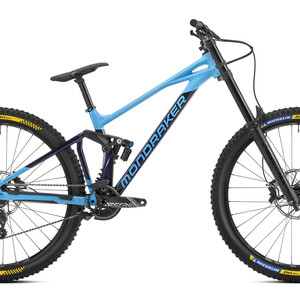
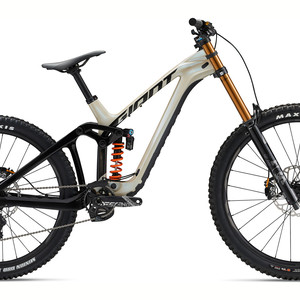
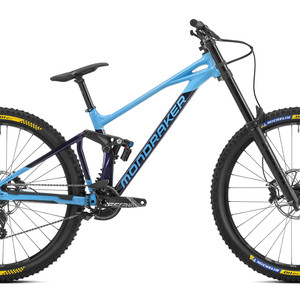
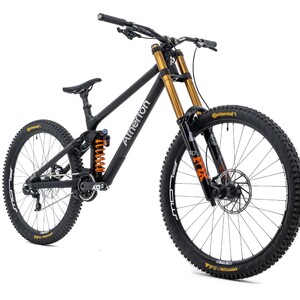


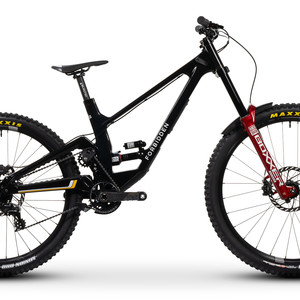








0 comments
Post a reply to: Tested: Intense M16C Pro Build